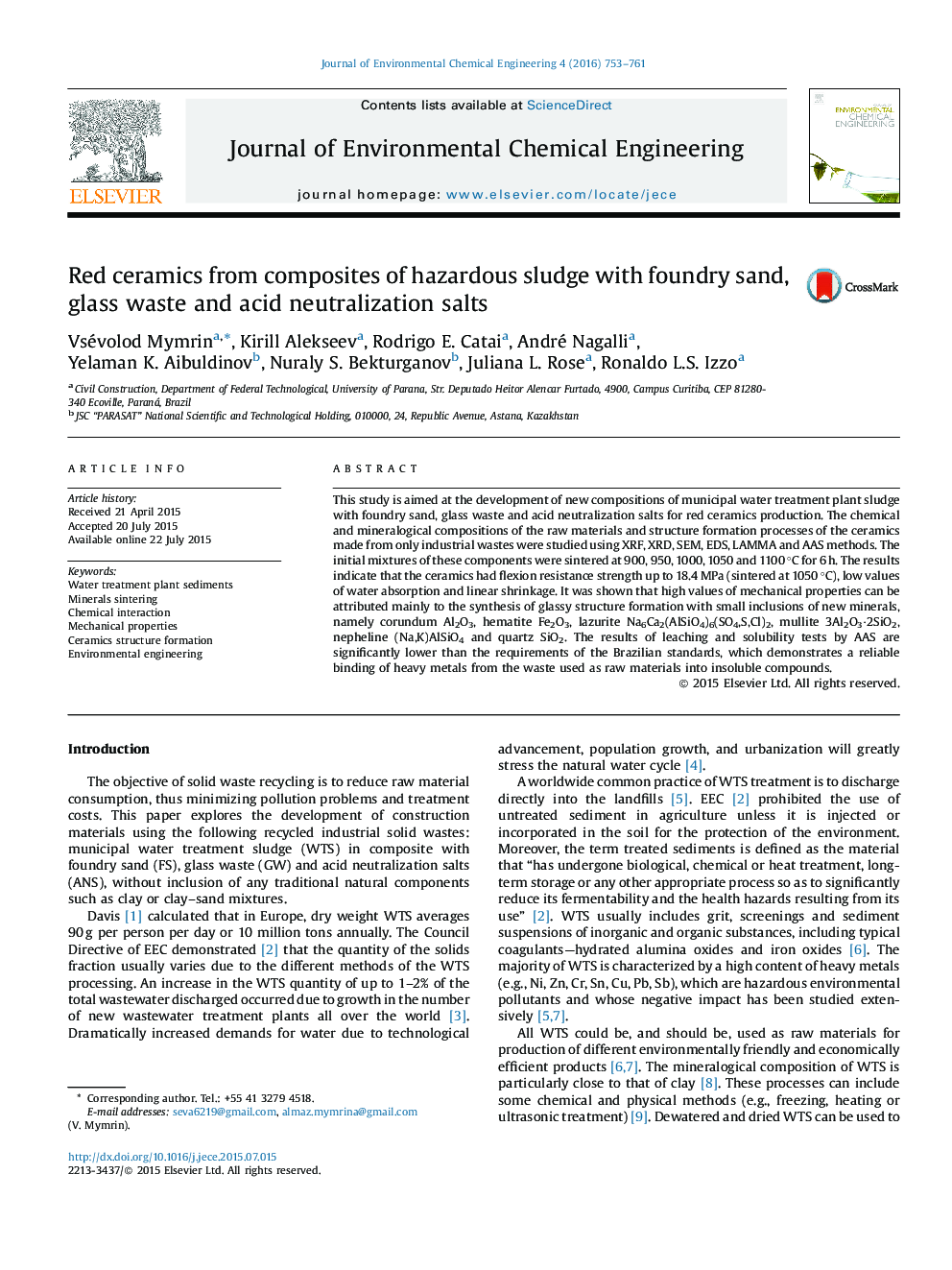| Article ID | Journal | Published Year | Pages | File Type |
|---|---|---|---|---|
| 221931 | Journal of Environmental Chemical Engineering | 2016 | 9 Pages |
•Were developed compositions with water treatment sludge for red ceramics production.•The values of flexural resistance strength was up to 18.4 MPa (sintered at 1050 °C).•Structure formation processes were studied by XRD, SEM, EDS, AAS and LAMMA methods.•Utilization of industrial wastes has high economical and environment efficiency.
This study is aimed at the development of new compositions of municipal water treatment plant sludge with foundry sand, glass waste and acid neutralization salts for red ceramics production. The chemical and mineralogical compositions of the raw materials and structure formation processes of the ceramics made from only industrial wastes were studied using XRF, XRD, SEM, EDS, LAMMA and AAS methods. The initial mixtures of these components were sintered at 900, 950, 1000, 1050 and 1100 °C for 6 h. The results indicate that the ceramics had flexion resistance strength up to 18.4 MPa (sintered at 1050 °C), low values of water absorption and linear shrinkage. It was shown that high values of mechanical properties can be attributed mainly to the synthesis of glassy structure formation with small inclusions of new minerals, namely corundum Al2O3, hematite Fe2O3, lazurite Na6Ca2(AlSiO4)6(SO4,S,Cl)2, mullite 3Al2O3·2SiO2, nepheline (Na,K)AlSiO4 and quartz SiO2. The results of leaching and solubility tests by AAS are significantly lower than the requirements of the Brazilian standards, which demonstrates a reliable binding of heavy metals from the waste used as raw materials into insoluble compounds.
